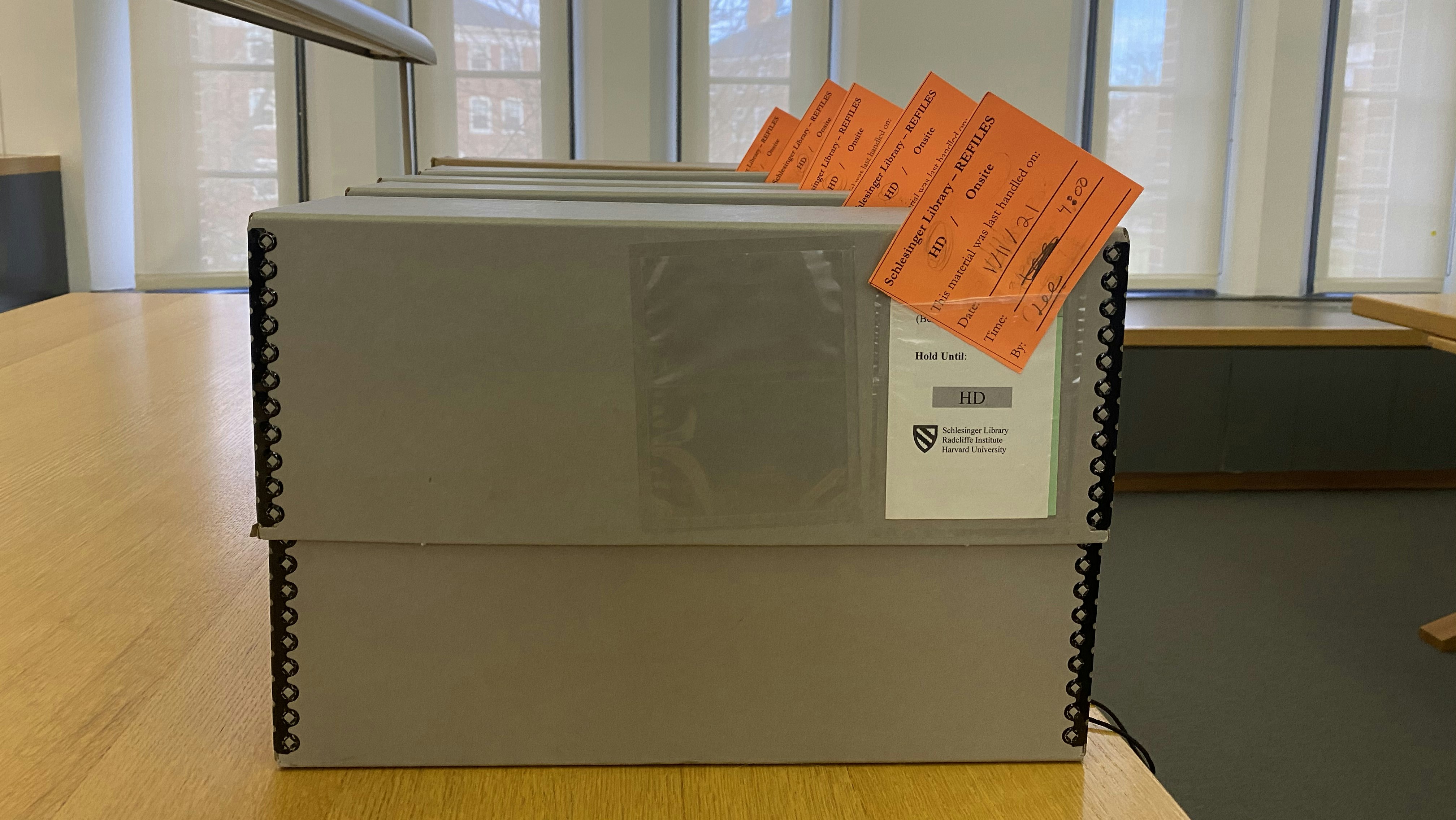Director’s Letter: Meeting the Moment

Remember faces? Watching researchers smile, frown, raise an eyebrow, or scratch their heads when they make discoveries in our collections as the sun streams into the Carol K. Pforzheimer Reading Room is one of the great joys of working at the Schlesinger.
How shocking it feels to write that we last welcomed patrons to the reading room, and students to our seminar space, in early March 2020, nearly a year ago. We were just learning to take advantage of the expansive new capabilities of our renovated spaces when the pandemic locked us down.
In the intervening months, the Library has been transformed in ways we could scarcely have imagined, with exhibition and meeting spaces turned into solitary berths for staff to safely eat, bespoke digitization stations set up in remote corners of each floor, the classroom empty, and the reading room turned into a massive staging and decontamination space. Since July, a rotating crew of Library staff has come to work daily, carefully following Harvard Library and Radcliffe Institute COVID safety protocols. The core of our emergency operations is patron facing: staff from every department of the Library—curators, archivists, cataloguers, photo processors, digital services specialists, and administrative personnel—have devoted themselves to paging, scanning, and remotely delivering materials to patrons across the Harvard campus and around the world. Since July, we have shipped out nearly 100,000 scanned pages, every one of them an opportunity for discovery, a chance to help a researcher sustain momentum, a teacher to innovate in the classroom, or a student to learn a richer and more complete history of the United States.

Jane Kamensky gives us an inside look at how the Library has shifted its operations in order to continue its mission during the pandemic.
But other facets of our work have continued, too, massively transformed yet uninterrupted. As you’ll read in this issue, Schlesinger archivists are experimenting with new ways of appraising, processing, and describing manuscripts and printed materials. Curators have undertaken virtual visits to “see” the dizzying number of exciting new collections that the pandemic has yielded, as their owners—idled from work and travel—have taken time to discover the treasure buried in their file cabinets, storage units, and basements.
Some of our longest-serving and most deeply cherished professionals have seized the moment for another kind of transformation, embarking on new projects in retirement. Ruth Edmonds Hill, the pioneering oral historian who worked at Schlesinger for more than four decades, retired in December. Dr. Kathryn Allamong Jacob, who served brilliantly for 20 years as curator of manuscripts, acquiring roughly 2,000 new collections during her tenure, passed the torch to Jenny Gotwals, who brings her deep experience as a scholar of women’s history and as lead archivist at the Schlesinger to the reimagined position of curator for gender and society. Marilyn Dunn, the Lia Gelin Poorvu Executive Director of the Library, concluded 15 transformative years as the Schlesinger’s leader at the end of January. Marilyn cannot be replaced, only succeeded. As we begin the search for our new executive director, we do so with the advantages of the organization she built: a Library applauded internationally for its work at the cutting-edge of the field, an institution more vibrant and flexible than she found it. Flexible enough, in fact, to meet the moment—and indeed to transcend it.
Jane Kamensky is the Carl and Lily Pforzheimer Foundation Director, Arthur and Elizabeth Schlesinger Library on the History of Women in America, Harvard Radcliffe Institute, and Jonathan Trumbull Professor of American History, Harvard Faculty of Arts and Sciences.







